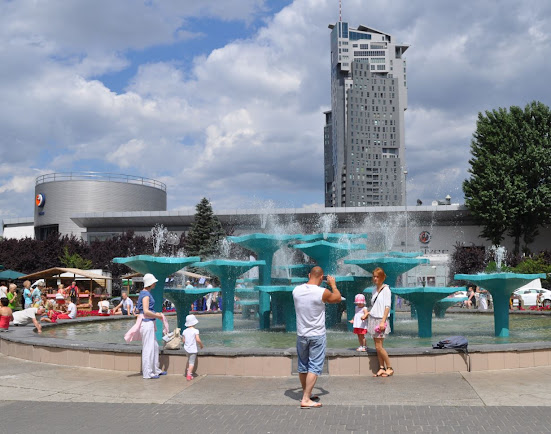Gdynia
The town
Gdynia is the newest part of 3-city and probably the most dynamic, with lots of international and profitable companies. The unemployment rate is negligible and in the street you will notice people moving on their way to tangible activities.
A quarter of a million people are gathered together in this enclave, and according to surveys on well-being, these are the people in Poland who are happiest with life; it has been like this for quite a few years, and actually life seems uncomplicated when you walk through the well-kept city with the broad boulevards and elegant shops.
In 1922, the village Gdynia starts to grow intensively after a government decision in Warszawa. According to the Treaty of Versailles, Poland has around 140 kilometres of coastline, but that doesn’t include a harbour city. Gdynia is placed strategically on the Bay of Gdansk and the area itself is a natural harbour, just needing to be adapted to its purpose. The first cargo dock is opened in 1923.
Gdynia is the biggest Polish investment in the interwar period, and after opening the first temporary quay, everything happens quickly; a railway line is established, a shipyard, infrastructure, stadium, and huge companies are attracted to Gdynia. The Danish company Højgård & Schultz was the general contractor on the construction of the actual port, a task that lasted from 1925 till 1935. By the outbreak of WWII, the Poles were ousted from the town, which was afterwards declared to be German. After the destructions of the war, Højgård & Schultz was again in 1945 given the task of rebuilding the harbour, a task that had priority before many of the other urgent reconstruction tasks after the war because of its strategic importance for trade.

Gdynia – the harbour
The atmosphere
Gdynia is not a typical holiday town, and you will also meet a relatively small number of tourists when walking through the streets of the city; in spite of an indubitable international influence caused by a huge number of international companies being represented here, it is of course a huge, international harbour town.
When you walk through the town, it is obvious that it is quite a young town, where the town planners have made a heavy, centralistic fingerprint. We notice this in the broad streets and boulevards, but also in the logic that was used to bind the town together, and makes it easy to get around, walking or with the use of public transport.

Gdynia high riser by the water lane
The market

Entrance to the market
Market halls are placed right next to the central station and offer an orgy of foodstuff as well as clothing and other consumer goods. The market halls are much bigger than those usually seen in Polish towns and the quality is very good; especially the fish market is worth a visit, but the entire market area is very dynamic and takes place in a fresh and somewhat organised manner.
The Harbour
Undoubtedly the harbour is the most important recreational place in Gdynia, this is where the whole town will get together for a stroll at the weekend, and at the grounds next to the harbour, parties, music events and other activities are arranged. The harbour consists of a number of basins, most of them intended for goods or raw materials, i.e. the coal harbour is an independent area. You may walk around most of the harbour area and take a close look at the usually very large number of ships alongside the quays. The most popular place for an evening walk is Jan Pawel II Avenue that runs along a row of small bars, fish restaurants and interesting shopping stalls. This is also where you find the Ocean Aquarium of Gdynia, water tram stop and ferry connection to Sopot, Gdansk and the peninsula Hel. The destroyer Blyskawica (Flash of Lightening) from 1937 lies in the harbour the year round, and visitors can walk around and have a demonstration of former naval war techniques.
Kamienna Gora
The best view of Gdynia is from Kamienna Gora (the Stone mountain) – around half a kilometre from Jan Pawel II Avenue and the harbour in the direction towards Sopot.
The peak point is 52 metres above sea level, and it gives an excellent view over the bay, the ships and the rest of the harbour and surrounding areas. A huge cross marks the top of the hill where we also find a museum dedicated to the Polish navy.
Orlowo and the cliff
Orlowo lies by the shore, where Sopot ends and Gdynia starts. The most well known landmark is the cliff reaching out into the water and making a barrier for a direct view from Sopot and the centre of Gdynia.
The neighbourhood is a typical holiday resort, by some considered the most exclusive you can find in Tri-City, with its own pier (though not as huge as the Sopot pier), summer theatre and exclusive buildings. It’s a bit more relaxed than Sopot itself, but it is within a walking distance of Monte Cassino, so no reason to worry about lack of entertainment.
Please send an email to m@hardenfelt.pl if you would like an English-speaking tour guide to show you the most important places in Warsaw.
